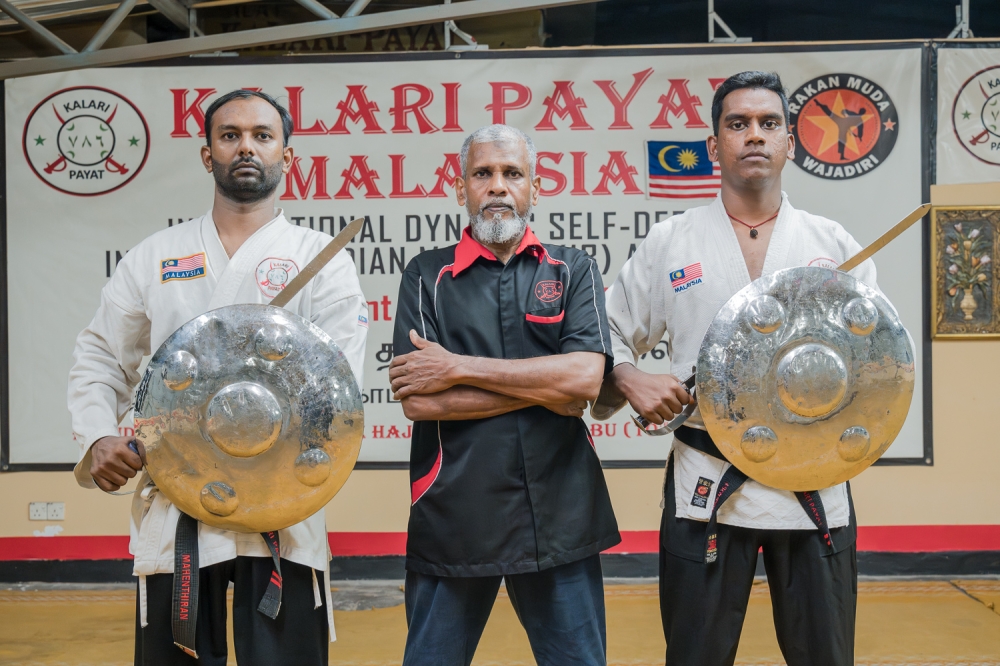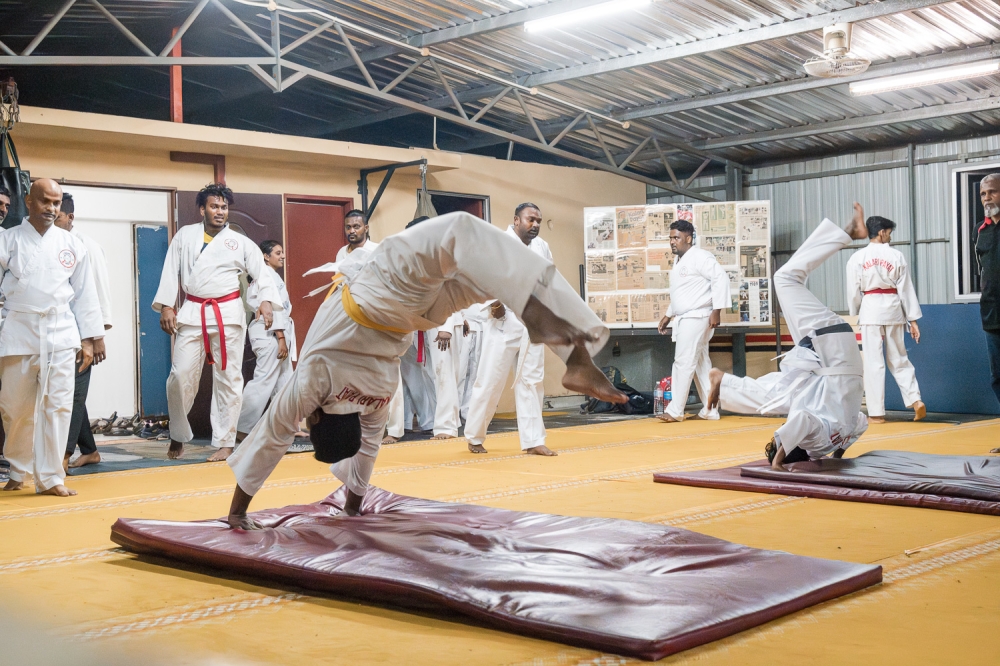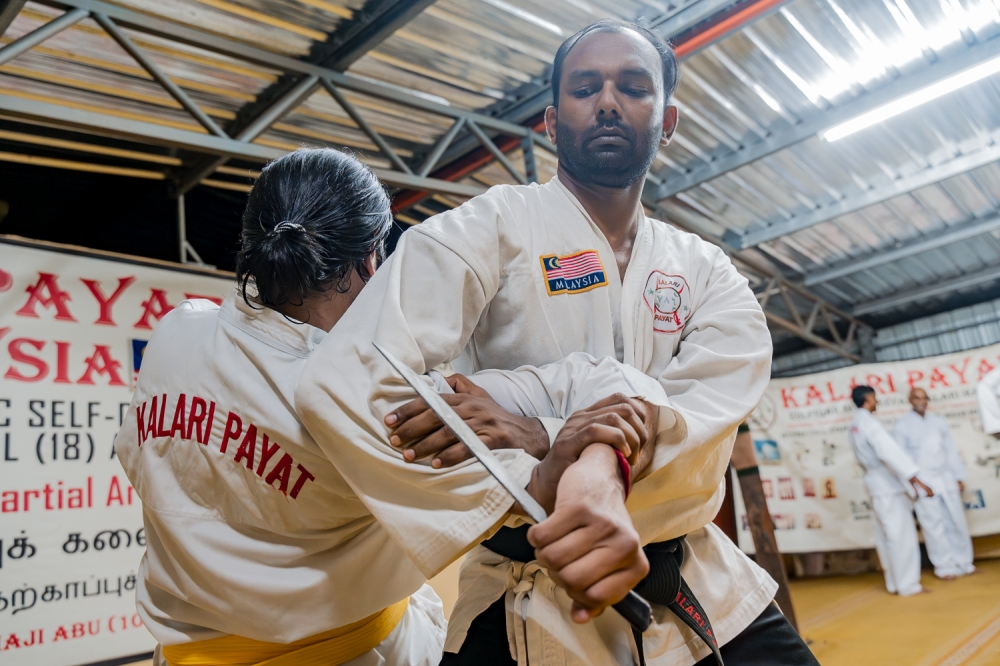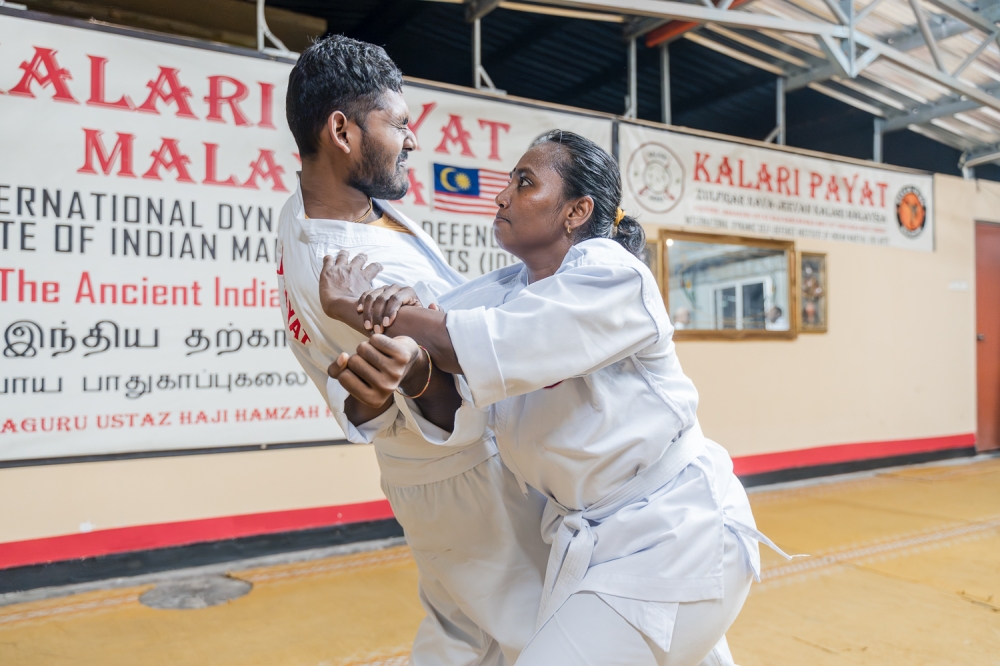KUALA LUMPUR, May 24 — Kalaripayattu, one of the oldest surviving martial art forms, is believed to have originated from the Indian coastal state of Kerala some 5,000 years ago.
The warrior sage Parashurama — the sixth reincarnation of the Hindu god Vishnu — is said to be the founder of kalaripayattu while Sage Agastya serves as its patron saint.
In Malayalam, the word “kalari” means battlefield while “payattu” refers to practice.
For over 50 years now, the Kalari Payat Academy at Jalan Liku in Bangsar has been the only institution teaching kalaripayattu in Malaysia.
The institution was founded by Mahaguru Ustaz Haji Hamzah Haji Abu in 1973, who migrated with his family from Kerala to Malaya in the early 1950s.
“Our mahaguru started learning kalaripayattu at the age of six and he learned from 13 kalaripayattu masters, besides his father and grandfather.
“In 1973, he founded the International Dynamic Self-Defence Institute of Indian Martial Arts (IDSDK). The Kalari Payat Academy was established as its global headquarters,” Master Mahenthiran Natarajan, who manages the academy said.

‘A way of life’
Mahenthiran, 35, started practising kalaripayattu 12 years ago and currently serves as an instructor at the academy.
He said kalaripayattu, used for warfare in ancient India, is a comprehensive art which also teaches yoga, meditation and healing techniques to lead a balanced life.
“Kalaripayattu is a way of life and you can learn it lifelong.
“It keeps you physically fit, removes fear and strengthens your mind to manage inner conflicts.
“Advanced practitioners are taught the varma kalai — a traditional way to manipulate the body’s pressure points to heal or cause harm.”

“That’s why kalari is a deadly martial art,” he said, adding that the practice was banned in 1804 during the British colonial rule in India but survived underground.
The academy’s chief instructor, Grandmaster Abdul Rahman Syed Mohamed said kalaripayattu gained traction in Malaysia when Bruce Lee’s martial art films fuelled the “kung fu craze” in the 1970s.
During that era, Abdul Rahman ventured into various martial arts before devoting himself to kalaripayattu for the last 43 years.

“Back then, we had about six centres throughout Malaysia with around 600 students.
“Now, only this centre in Bangsar remains with around 50 active students,” the 63-year-old said.
Abdul Rahman said kalaripayattu disciples undergo rigorous training for at least 12 years to master the martial art under the traditional system in Kerala.
“They wear dhoti and train barefoot on beach sand twice a day throughout the week, except on Fridays.
“They must master every technique before learning a new one.
“This can take years because kalaripayattu is a vast art. We have about 400 to 500 different techniques just for the lock component,” he explained.
The Kalari Payat Academy, however, adopted the uniform and belt ranking system — like most martial art institutions — and developed a more concise curriculum for students in Malaysia.
Students are also trained to spar with sword and shield — the iconic symbols of kalaripayattu — along with other weapons like long batons and a flexible, whip-like sword called urumi.

‘Kalari chooses you’
Just two and a half months into training, kalaripayattu practitioner Santhi Kesavan, 41 is enthusiastic about mastering the martial art and urged more women to learn it.
“I am not going to stop. I want to learn kalaripayattu lifelong. This is a beautiful art,” Santhi, a corporate secretary based in Bangsar South, said.
Her nephew will be joining her once he turns 16 next year since the academy only accepts students aged 16 and above.
Newcomers must also take an oath that they will not misuse kalaripayattu to intentionally harm others before starting their training.
Abdul Rahman, however, noted that very few students persevere to master the art.
“You need some divine blessings to learn kalaripayattu. That’s why it is regarded as the mother of all martial arts,” the grandmaster said.
Mahenthiran recalled one of his grandmasters putting it more aptly: “He used to say that you don’t choose kalari. Kalari chooses you.”






















